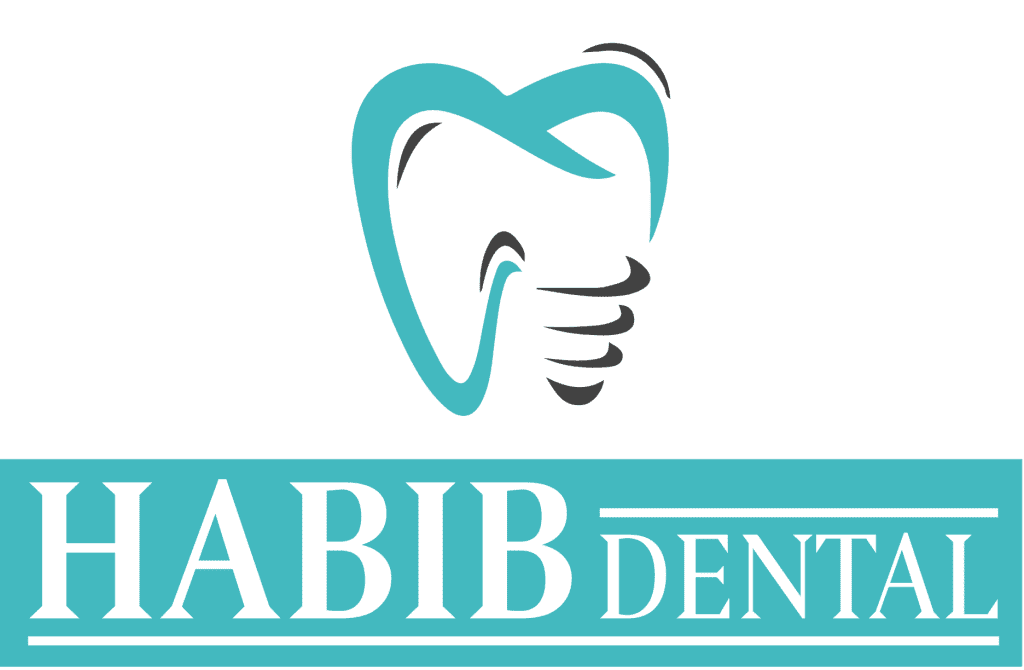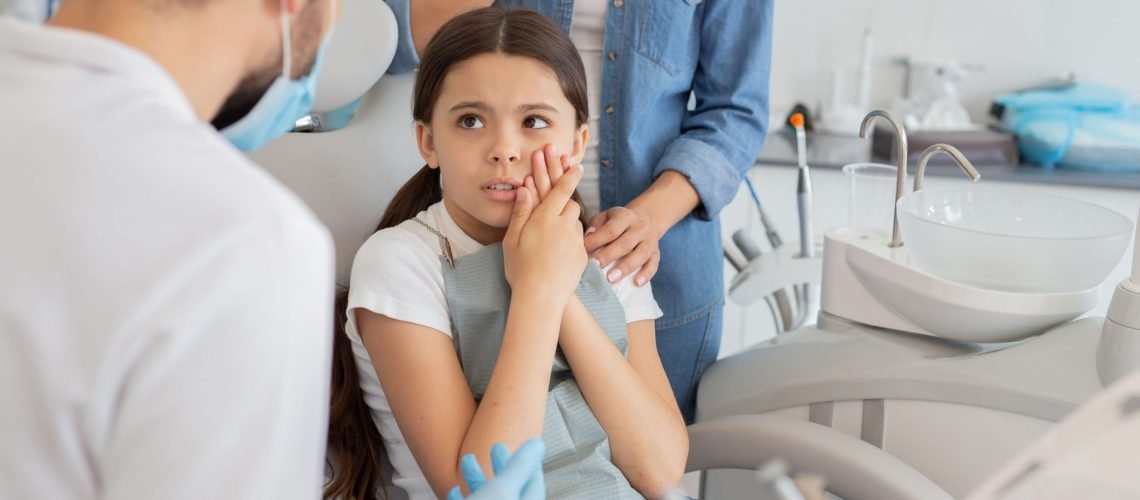Dental pain affects millions of people around the globe, impacting their daily lives and well-being. As a result, effective dental pain management is very important to make sure that individuals receive proper relief and treatment. Here we’ll explore different aspects of dental pain, starting from understanding its types and causes to inspecting cutting-edge treatments and preventive measures.
Understanding Dental Pain
Types of Dental Pain
- Toothache: A sharp or throbbing pain often emerges from tooth pulp which is generally caused by decay or infection. The severity of the pain can vary from mild discomfort to debilitating pain.
- Sensitivity: It is denoted by discomfort when exposed to hot or cold stuff. It’s frequent and can indicate different inherent issues.
- Post-treatment Pain: Discomfort felt after dental procedures such as extractions or root canals is common and it subsides slowly. But if the pain is persistent, it may need attention.
Common Causes of Dental Pain
- Cavities: According to the World Health Organization (WHO), dental cavities affect around 2.3 billion people globally where 620 million affected are children.
- Gum Disease: According to the Global Burden of Disease Study, it is a chronic condition that affects 9 out of 10 people worldwide.
- Trauma: As per the Centers for Disease Control and Prevention (CDC), dental injuries are common, considering 5% of injuries treated in emergency departments.
The Role of Prevention
Regular Dental Check-ups
- Frequency: Yearly check-ups are proposed for early detection and prevention. According to the American Dental Association (ADA), early detection can minimize treatment expenses by 40%. Children, mothers before their pregnancy, and adults who have diabetes are recommended to visit dentists every 6 months.
- Impact: It has been revealed that regular dental visits diminish the risk of developing severe dental issues by 80%, according to a study in the Journal of Dental Research.
Tips for Maintaining Good Oral Hygiene
- Brushing: According to a Cochrane review, brushing your teeth twice daily with fluoride toothpaste decreases the risk of cavities by 25%.
- Flossing: As per the Journal of Periodontology, regular flossing diminishes the risk of cavities by 40%.
Preventive Measures for Long-term Pain Management
- Fluoride Treatments: According to the CDC, applying fluoride decreases the likelihood of cavities by 20-40%.
- Sealants: According to the ADA, sealants reduce cavities by up to 80%, especially in molars.
Diagnosis of Dental Pain
Diagnostic Procedures
- X-rays: It is important to detect hidden issues. According to the Journal of the American Dental Association, digital X-rays decrease radiation exposure by up to 90%.
- Pulp Testing: It assesses the vitality of the tooth’s pulp which is essential for determining treatment needs.
- Clinical Examination: Clinical examinations help identify oral health issues and evaluate overall dental health.
Importance of Accurate Diagnosis
- Misdiagnosis: Misdiagnosis can lead to unsuccessful pain management and unnecessary procedures, further emphasizing the necessity for precision.
- Success Stories: Accurate diagnosis contributes to a 90% success rate in curing dental pain, and preventing complications.
Treatment Options for Dental Pain
Non-Invasive Approaches
Over-the-Counter Pain Relievers
- Ibuprofen: According to a meta-analysis published in the Journal of the American Dental Association, ibuprofen effectively decreases dental pain by 50%.
- Acetaminophen: It is appropriate for mild to moderate pain, offering relief without anti-inflammatory effects.
Topical Analgesics
- Benzocaine Gel: Topical application offers localized relief, particularly for teething pain in children.
- Desensitizing Toothpaste: It is developed to reduce sensitivity. It promotes comfort during oral activities.
Home Remedies
- Saltwater Rinse: As per Scientific Reports, saltwater rinses can reduce inflammation and promote healing.
- Clove Oil: According to the Journal of Dentistry, the natural analgesic properties of clove oil provide temporary relief.
Invasive Approaches
Dental Procedures
- Tooth-Colored Fillings: Research in the Journal of Dentistry shows a 95% success rate in preventing repetitive decay.
- Root Canal Therapy: A review in the Journal of Endodontics discloses an 89% success rate in preserving natural teeth.
Surgical Interventions
- Wisdom Teeth Extraction: According to an American Association of Oral and Maxillofacial Surgeons report, extraction addresses impaction and corresponding pain.
- Gum Surgery: The Journal of Periodontology highlights the success of surgery in curing advanced gum disease and relieving chronic pain.
Dental Pain Management in Special Populations
Pediatric Dental Pain Management
Considerations for Children
- Pediatric Dentistry: For children specialized care is vital, concentrating on preventive measures and a positive experience.
- Behavior Management Techniques: Strategies like tell-show-do and positive reinforcement create a child-friendly environment.
Pediatric-Friendly Treatment Options
- Silver Diamine Fluoride: A study in the Journal of the American Dental Association supports its use in arresting decay without drilling for children who may be afraid of dental procedures.
- Pulpotomy: A Journal of Clinical Pediatric Dentistry study stresses its effectiveness in preserving primary tooth vitality, and preventing early loss.
Geriatric Dental Pain Management
Challenges in the Elderly Population
- Xerostomia: Dry mouth affects 30% of older adults which leads to dental pain. Sufficient hydration and saliva substitutes are crucial.
- Medication-Induced Issues: Side effects affecting oral health stress the need for coordinated care between dental and medical professionals.
Tailored Approaches for Seniors
- Implant-Supported Dentures: The International Journal of Dentistry promotes their use as a stable and comfortable option that improves overall function.
- Periodontal Care: The Journal of the American Geriatrics Society highlights the importance of tailored periodontal care to detect the increased risk of gum disease in older adults.
Emerging Technologies in Dental Pain Management
Advancements in Dental Anesthesia
- Computerized Local Anesthesia: Accuracy in anesthesia delivery is essential. A study in the Journal of Contemporary Dental Practice supports the use of computerized systems for accurate administration.
- Needle-Free Anesthesia: Journal of Endodontics reports suggest that needle-free options are promising alternatives, especially for those patients who are needle-phobic.
Innovative Pain Relief Methods
- Laser Therapy: The Journal of Clinical Laser Medicine & Surgery reports on the effectiveness of laser therapy in accelerating tissue repair, and reducing post-operative pain.
- Virtual Reality Distraction: A study in the Journal of Dental Research highlights its efficacy in reducing fear and pain perception during dental procedures.
The Role of Technology in Improving Patient Experience
- Telehealth Services: Remote consultations offer preliminary assessments, increasing accessibility to dental care.
- Digital Impressions: According to the Journal of Prosthetic Dentistry, digital impressions provide a quick, comfortable alternative to traditional molds.
Holistic Approaches to Dental Pain Management
Integrative Approaches
- Acupuncture: Complementary therapy for relieving pain. A Cochrane review supports its application in dental settings.
- Mindfulness Practices: Stress reduction through mindfulness has been proven to positively impact overall well-being, minimizing the perception of dental pain.
Addressing Mental Health
- Dental Anxiety: Impacts 36% of the population. The Journal of the American Dental Association stresses the need to address anxiety for effective pain management.
- Collaboration with Mental Health Professionals: Journal of Oral Rehabilitation studies highlight the advantages of collaborative care in detecting dental as well as mental health aspects.
Holistic Strategies
- Nutritional Counseling: The Journal of the American Dental Association fosters the role of a balanced diet in supporting oral health.
- Yoga and Relaxation Techniques: According to the Journal of Oral & Facial Pain and Headache, complementary practices can contribute to stress reduction and better pain management.
Patient Education and Empowerment
Importance of Education
- Empowering Patients: Knowledgeable patients actively participate in their care. A study in Patient Education and Counseling stresses the positive effect of patient education on treatment outcomes.
- Preventing Dental Pain: Early intervention through patient education can prevent serious dental issues. The Journal of Public Health Dentistry emphasizes the role of education in preventive dental care.
Resources for Self-Care
- Educational Brochures: Providing step-by-step guides for at-home care. The Journal of the American Dental Association highlights the effectiveness of educational materials in boosting oral health practices.
- Online Tutorials: According to the Journal of Dental Education, videos that demonstrate proper oral hygiene techniques can be accessible resources for patients.
Open Communication
- Patient-Dentist Dialogues: According to the Journal of Dentistry, effective communication between patient and dentist is essential for patient-centered care.
- Feedback Mechanisms: AS per the Journal of Patient Experience, continuous enhancement through patient input ensures responsive and patient-centric dental care.
The Future of Dental Pain Management
Ongoing Research and Development
- Gene Therapy: It indicates the potential for targeted pain management at the genetic level. The Journal of Pain Research explores the promising avenues of gene therapy in dental pain management.
- Nanotechnology: It includes innovations in drug delivery for localized pain relief. The Journal of Nanobiotechnology discusses the potentiality of nanotechnology in enhancing the accuracy of dental pain management.
Potential Breakthroughs
- Pain-Responsive Analgesics: Medications activated only in the presence of pain. The Journal of Controlled Release inspects the development of pain-responsive analgesics for more targeted pain relief.
- Biometric Feedback Systems: Real-time monitoring for personalized pain management. The Journal of Dental Research accentuates the potentiality of biometric feedback systems in tailoring pain management strategies.
The Evolving Role of Dentists
- Comprehensive Pain Management: Dentists are key players in interdisciplinary pain care. The Journal of Pain Research stresses the importance of dentists in the comprehensive management of pain.
- Educational Advocacy: It refers to promoting awareness of dental pain’s impact on overall health. The Journal of Dental Education emphasizes the role of dentists in educating professionals as well as the public on the broader implications of dental pain.
FAQs about Dental Pain Management
Q. How long does dental pain last after a filling?
A. Mild discomfort can last for a few days, but severe or prolonged pain should prompt a visit to your dentist.
Q. Can stress cause dental pain?
A. Yes, stress can lead to teeth grinding and jaw clenching, causing dental pain. Stress management techniques are pivotal.
Q. Is dental pain an emergency?
A. Severe pain, swelling, or signs of infection may indicate a dental emergency. Look for immediate care if you experience these symptoms.
Q. What are natural remedies for dental pain?
A. Natural remedies like clove oil, salt water rinses, and cold compresses can grant temporary relief from dental pain.
Q. How can I prevent gum disease and dental pain?
A. Regular brushing, flossing, and professional cleanings are key preventive measures. Regular dental check-ups are important for early detection.
Q. Can dental pain be a sign of a systemic health issue?
A. Yes, dental pain can be linked to systemic issues like heart disease or diabetes. A thorough examination is necessary.
Q. Are there dental pain management options for seniors?
A. Yes, options like implant-supported dentures and tailored periodontal care are effective in addressing dental pain in older adults.
Q. How can I manage dental anxiety during procedures?
A. Techniques like virtual reality distraction and mindfulness practices can help manage dental anxiety and reduce pain perception.
Conclusion
The management of dental pain is a significant and evolving field. From preventive measures to innovative treatments and holistic approaches, a thorough understanding is vital for both patients and dental professionals. Individuals can ardently contribute to a future where they can effectively manage dental pain by staying informed, exercising good oral hygiene, and adopting emerging technologies.
Additional Resources
For more in-depth information on dental pain management and oral health, you can explore the following resources:
- American Dental Association (ADA)
- International Association for the Study of Pain (IASP)
- Colgate Oral Care Center
- National Institute of Dental and Craniofacial Research (NIDCR)
Remember, proactive dental care is the key to preventing and managing dental pain effectively. Stay informed, prioritize your oral health, and consult with your dentist for personalized guidance.


